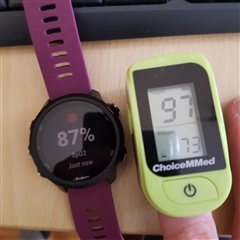I bought a Forerunner 245 a few days ago and it nearly gave me heart failure when it shows my spO2 so low that I should be in hospital. It will show a reading of 82% while an oxymeter shows 98%. It it a faulty model or are the readings generally this bad? I have attached a reading that I have just taken compared to the oxymeter.


